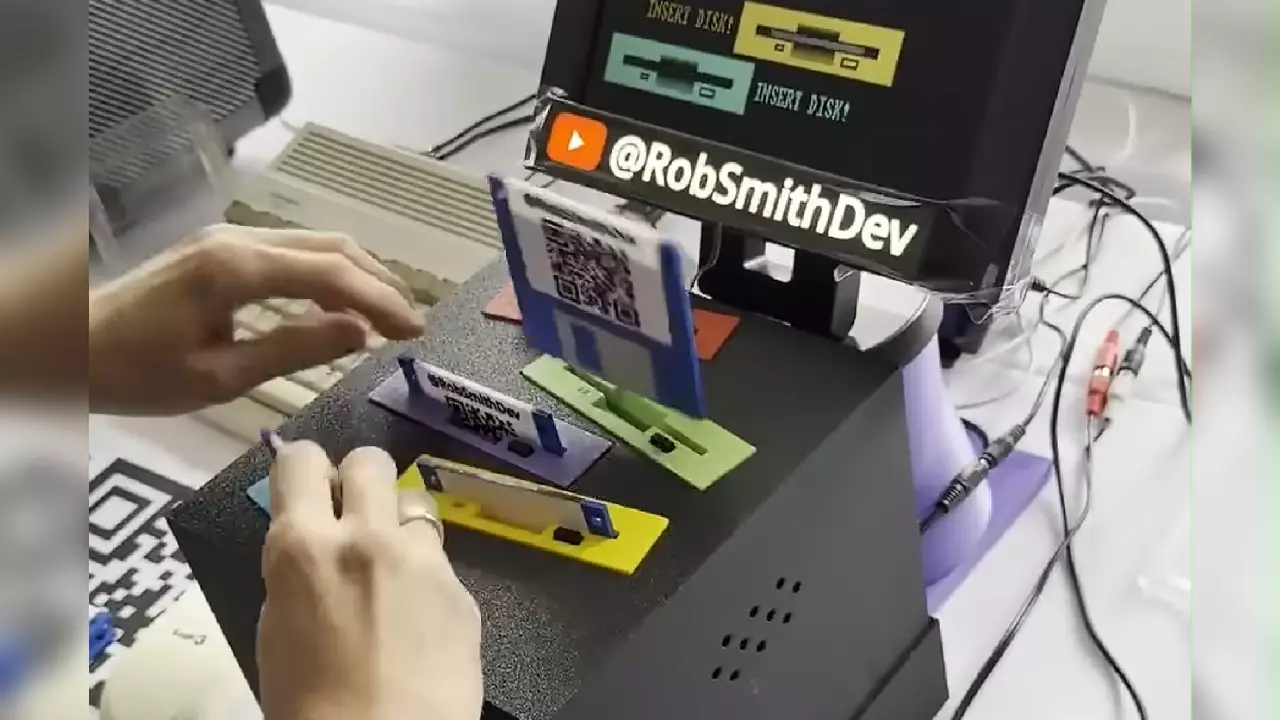In a world obsessed with groundbreaking innovation, it’s easy to overlook the charm and ingenuity embedded in retro technology. Yet, a recent project exemplifies how reimagining aged hardware can ignite fresh enthusiasm and creative expression. The creation of *DiskFight*, a game built around vintage floppy disks, exemplifies this blend of nostalgia and modern craftsmanship. Despite never having physically touched a floppy disk before, the creator’s passion transformed an obsolete storage medium into an interactive, playful experience. This act of bridging past and present reveals a deeper truth: innovation doesn’t always originate in new gadgets but in the inventive repurposing of what we once discarded.
The concept behind *DiskFight* is deceptively simple yet remarkably clever. By employing custom-designed linear actuators to manipulate floppy disks, the creator mimics a “whack-a-mole” mechanic—only instead of moles, disks pop in and out of their slots based on player actions. It’s a subtle twist; rather than aggressively smashing, the game presses for gentle, tactile engagement. This shift from destructive to delicate interaction is a potent statement about how nostalgia often encourages more reflective and mindful technological play. The decision to incorporate physical components—screws, glue, and 3D printed parts—underscores an appreciation for tangible craftsmanship that digital-only experiences seldom afford.
The Artistic Marriage of Software and Hardware
At the heart of this project lies a harmonious integration of hardware artistry and digital programming. The game itself was developed using *AMOS*, a language familiar to enthusiasts of the Amiga platform, which lends the project an authentic retro charm. The aesthetic is complemented by the soundtrack, composed by Hoffman using vintage devices—a nod to the musical ethos of the era. The music, titled *Disk Menace*, intensifies as the game progresses, creating an immersive experience that echoes the adrenaline of classic arcade gameplay while infusing it with modern rhythm and energy.
What stands out critically is the creator’s dedication to authenticity and detail. The physical design of the game, crafted through 3D printing and assembled with precision, exemplifies a hands-on approach that celebrates the tactile nature of vintage tech. It’s a reminder that the appeal of old technology isn’t merely in nostalgia but in the joy of DIY engineering—learning, experimenting, and then showcasing innovative outcomes. The process was sped up with background music, providing not just a tutorial but an artistic performance—a creative spectacle that transforms technical work into entertainment.
Why This Matters in a Digital Age
In an era where digital games dominate, projects like *DiskFight* challenge us to reconsider what constitutes engagement. Modern gaming often emphasizes hyper-realistic graphics and complex narratives, often at the expense of tactile and emotional connection. The ingenuity behind this project reveals the potential for retro-inspired hardware to foster a different kind of interaction—one rooted in physicality, patience, and genuine craftsmanship.
Furthermore, *DiskFight* questions the notion of progress itself. It suggests that innovation isn’t just about new features or cutting-edge technology but also about how we reinterpret and breathe new life into past inventions. This mindset encourages a cultural shift: valuing the process of creation and the stories embedded in previous eras of technology. As we continue to push forward, projects like this serve as a potent reminder that the most inspiring inventions often involve a blend of old-school experimentation and contemporary artistic vision.
By meticulously rebuilding a nostalgic relic into a modern artistic piece, the creator demonstrates that true innovation lies in viewing technology not just as tools but as mediums for storytelling and personal expression. This project underscores a broad, compelling message—sometimes, to forge the future, we need to revisit the past with fresh eyes and inventive hands.

